The Allerton Oak: Legends of Liverpool's 1,000-year-old tree
- Published
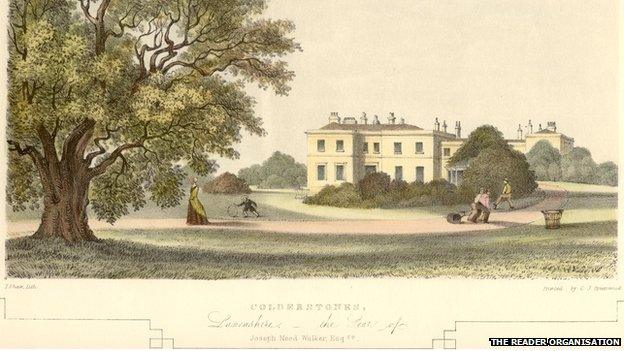
This artist's illustration by John Shaw from 1847 shows the Allerton Oak and Calderstones Mansion House
Standing tall since the Middle Ages, the 1,000-year-old Allerton Oak has a rich history to tell. Its spreading branches once formed a medieval courtroom, its leaves a symbol of love for soldiers fighting at the front. Now this grand old Liverpool landmark is shortlisted for England's Tree of the Year, external award.
The oak leaf has long been an emblem of strength and endurance.
During World War Two, friends and families of soldiers would send acorns and leaves from this landmark to their loved ones to protect them.
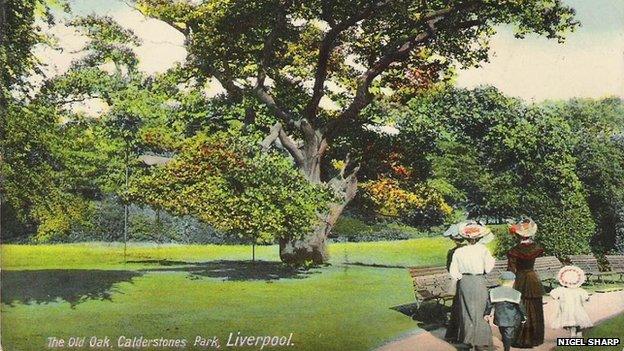
The grand old Allerton Oak has been a visitor attraction for many years

A postcard from 1900 shows the 1,000-year-old Allerton Oak in Calderstones Park, Liverpool
Nigel Sharp from Liverpool City Council said staff plucked leaves from the Allerton Oak in Calderstones Park and sent them to colleagues fighting at the front to let them know they had not been forgotten.
Jon Warren has tended the tree for most of his adult life in his 43 years as gardener for Calderstones Park.
Mr Warren, 59, from Wavertree in Liverpool, said he was delighted that the "oldest oak in the North West" had been nominated by the Woodland Trust for the award.
"It will outlive you and me," he said confidently.
Holding court
Allerton, the suburb in which the park is situated, was mentioned in the Domesday Book - the register of land made for King William I in 1086.
The exact age of the Allerton Oak is unknown but a sign at the base of the tree tells of its role in medieval times.
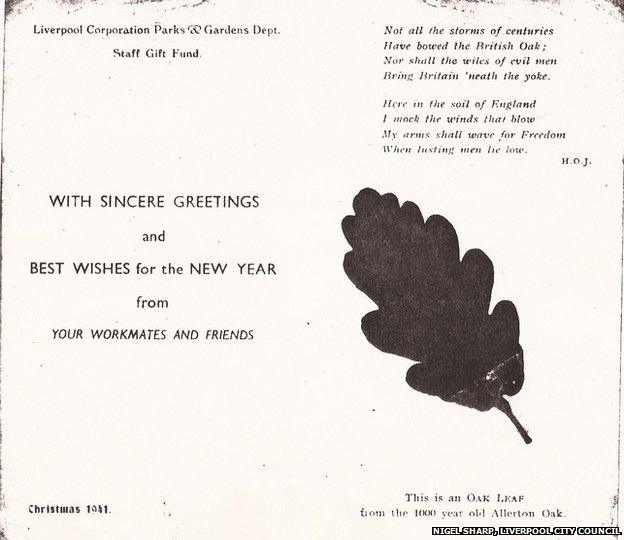
In 1941, this Christmas card containing a leaf from the Allerton Oak was sent to soldiers
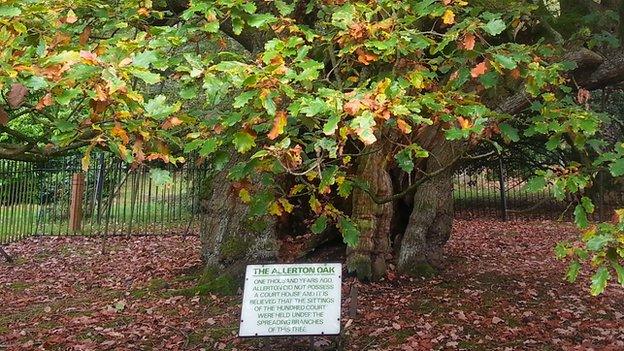
The 'Hundred Court' is said to have convened under the tree's leafy branches
It reads: "One thousand years ago, Allerton did not possess a court house and it is believed that the sittings of the Hundred Court were held under the spreading branches of this tree".
Though this is a popular legend, local historian Mike Royden suggests this local court may have met closer to the nearby 'Calderstones' - remnants of a Neolithic burial site from around 5,000 years ago, which are thought to be the oldest monument in Liverpool.
'Lotty Sleigh' explosion
The tree continued to be a popular visitor attraction during the Victorian era as the park passed from Henry and Charles MacIver, who had owned it since 1875, to the Liverpool Corporation in 1902.
Today, metal poles prop up the arms of this ancient oak, like something from a Salvador Dali painting.
The tree has been weakened by a huge crack that split the tree, attributed in popular myth to the explosion of gunpowder ship the 'Lotty Sleigh' in 1864.
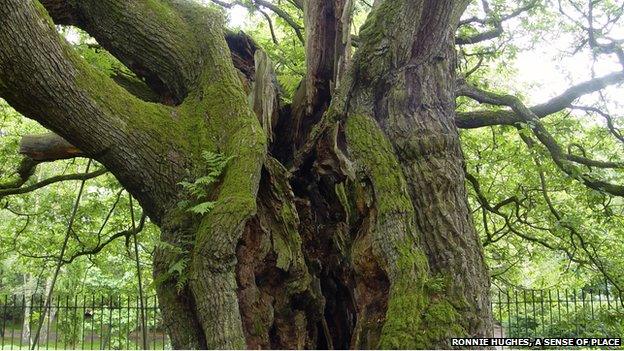
A cavernous split in the old oak tree

Poles prop up the weaving branches of the Allerton oak
The ship, laden with about 11 tonnes of volatile gunpowder, caught fire while it was anchored in the River Mersey, causing a huge blast and a shock wave, which, legend says, split the tree in half.
It is also said that the windows of nearby Calderstones Mansion House were blown out.
Allerton Oak's offspring
In 1970, local paper the Liverpool Echo condemned the tree as "doomed" to die by 2020 due to rot in the trunk.
But it continues to thrive today and thanks to gardener Jon Warren, the tree now has a new relative in the park.
Mr Warren planted 'Allerton Oak the Younger' seven years ago in the hopes that it too will last a thousand years.

Gardener Jon Warren planted an acorn from the 1,000-year-old tree to grow 'Allerton Oak the Younger'
These are the only two Sessile Oaks in the park, the deciduous broadleaf tree native to the UK and most of Europe, which is a close relative of England's national tree, the Royal Oak.
'Best tree ever'
The Woodland Trust is campaigning to have a national register set up to help protect historic trees like this one.
The organisation received over 200 nominations from across the country before choosing their top ten.
Natalie Duckett, who nominated the Allerton Oak wrote: "This tree is amazing! ... I think it's just the best tree ever."

The Allerton Oak in winter...
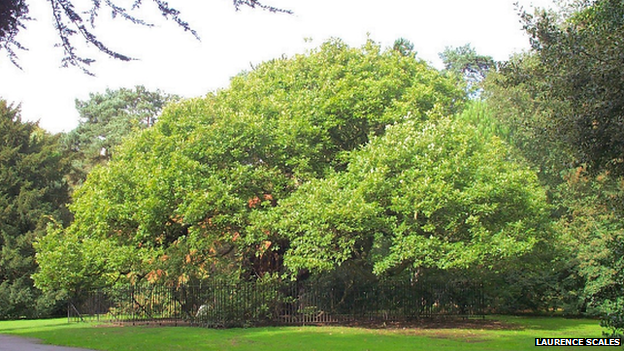
.. and summer
The public has until 4 November to vote, external for their favourite entry from the final shortlist.
The winner will represent England in April 2015 against competitors from Wales, Scotland and elsewhere in Europe in a competition run by the Environmental Partnership Association.
- Published28 October 2014
- Published27 October 2014

- Published8 September 2014
